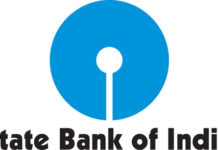1. What is the world ranking of Indian Railway network?
A. 1st
B. 2nd
C. 3rd
D. 4th
Ans: C
Explanation: Indian Railway is the 3rd largest rail network in the world after US and China. It is a multi-gauge, multi-traction system. Hence, C is the correct option.
2. Indian Railways are divided into how many zones?
A. 17
B. 18
C. 19
D. 20
Ans: A
Explanation: Indian Railways divides its operations into 17 zones, which are further sub-divided into divisions, each having a divisional headquarters. Hence, A is the correct option.
3. Which of the following recently made 17th zone of Indian Railway?
A. Metro Rail in Kolkata
B. South Central Railway (SCR)
C. North Central Railway
D. North Frontier
Ans: A
Explanation: There are 17 zones in Indian Railway. Kolkata metro is the only metro to be considered as a separate zone. Hence, A is the correct option.
4. When was the first railway in India operated for public traffic?
A. 1857
B. 1858
C. 1855
D. 1853
Ans: D
Explanation: The first rail railway line in India was operated for public traffic in 1853 between Bombay (Now Mumbai) to Thane. Hence, D is the correct option.
5. Which of the following railway is not recognised by UNESCO World heritage Site?
A. Darjeeling Himalayan Railway
B. Nilgiri Mountain Railway
C. Kalka-Shimla Railway
D. North-Eastern Railway
Ans: D
Explanation: There are two UNESCO World Heritage Sites on IR viz. the Chatrapati Shivaji Terminus and the Mountain railways of India. Mountain railways of India is not contiguous, but consists of three separate railway lines located in different parts of the country viz. the Darjeeling Himalayan Railway; the Nilgiri Mountain Railway; and the Kalka-Shimla Railway. Hence, D is the correct option.
6. Which railway line runs along the Indian west coast parallel to Arabian Sea and Western Ghats?
A. South Central Railway
B. Konkan Railways
C. Southern Railway
D. South Eastern Railway
Ans: B
Explanation: The Konkan Railways passes through 3 states of India – Goa, Maharashtra and Karnataka. It runs along the Indian west coast parallel to Arabian Sea and Western Ghats. It is an extremely beautiful and scenic route running from Maharashtra till Karnataka. Hence, B is the correct option.
7. Match the following
Set I
a. Railwheel Factory
b. Rail Coach Factory
c. Integral Coach Factory
d. Diesel Loco modernisation works
Set II
1. Patiala
2. Chennai
3. Kapurthala
4. Bengaluru
Code:
a b c d
A. 1 2 3 4
B. 4 3 2 1
C. 3 1 2 4
D. 4 1 2 3
Ans: B
Explanation: The correct match is given below:
Railwheel Factory- Bengaluru
Rail Coach Factory- Kapurthala
Integral Coach Factory- Chennai
Diesel Loco modernisation works- Patiala
Hence, B is the correct option.
8. Which of the following express trains run on the Indian Railways network has longest-run in terms of total time & distance?
A. Vivek Express
B. Himsagar Express
C. Navyug Express
D. Guwahati Express
Ans: A
Explanation: An Indian rail network is one of the world’s largest railway networks. Vivek Express is the longest route on the Indian Railways network, in terms of distance and time, and is the 9th longest in the world. It travels 4,273 km, making it the longest-run in terms of total time and distance. Hence, A is the correct option.
9. Which of the following National Highway connects the four metro cities of India (Delhi, Mumbai, Kolkata and Chennai)?
A. National Highway 44
B. National Highway 47A
C. Golden Quadrilateral (GQ)
D. North-South Corridor of NHDP
Ans: C
Explanation: Golden Quadrilateral (GQ) stretch which connects the four metro cities of India (Delhi, Mumbai, Kolkata and Chennai). Hence, C is the correct option.
10. India’s first Post Office set up in which place?
A. Madras (Now Chennai)
B. Calcutta (Now Kolkata)
C. Bombay (Now Mumbai)
D. Delhi
Ans: C
Explanation: The first post office in India was established by British East India Company in Bombay in 1764. Postage stamps were first used in India in 1852 at district of scinde (also known as scinde dawk).
GK Questions and Answers on the Multipurpose River-Valley Projects in India
1. Which of the following hydroelectric project constructed on the river Krishna?
A. Almatti Dam
B. Baspa Hydro-Electric Project
C. Bhadra Reservoir Project
D. Chamera Hydro-Electric Project
Ans: A
Explanation: The Almatti Dam is a hydroelectric project on the Krishna River in North Karnataka, India which was completed in July 2005. Hence, A is the correct option.
2. Which of the following power project of Gujarat equipped with power generating sets manufactured by Bharat Heavy Electricals Limited?
A. Subarnarekha Project
B. Ukai Project
C. Sardar Sarovar Project
D. Ramganga River Project
Ans: B
Explanation: The Ukai Dam, constructed across the Tapti River, is the second largest reservoir in Gujarat after the Sardar Sarovar. It is also known as Vallabh Sagar. Constructed in 1972, the dam is meant for irrigation, power generation and flood control. It was manufactured by Bharat Heavy Electricals Limited was inaugurated on October 12, 1977.Hence, B is the correct option.
3. Match the following
Set I
a. Tungabhadra Project
b. Tehri Dam Project
c. Subarnarekha Project
d. Sharavati Project
Set II
1. Located near the Gersoppa falls
2. Jharkhand, Odisha, West Bengal
3. River Bhagirithi
4. Joint undertaking by the governments of Andhra Pradesh and Karnataka
Code:
a b c d
A. 1 2 3 4
B. 4 3 1 2
C. 4 3 2 1
D. 4 1 3 2
Ans: C
Explanation: The correct matching is given below:
Tungabhadra Project: It is joint undertaking by the governments of Andhra Pradesh and Karnataka.
Tehri Dam Project: The World’s fifth and Asia’s largest hydroelectric project has been constructed on river Bhagirithi, a tributary of Ganga in Tehri district of Uttaranchal.
Subarnarekha project: It is a joint project of Jharkhand, Orissa and West Bengal. The project involves construction of Chandil dam and Galudih barrage on river Subernrekha in the Ganga basin, Icha dam and Kharkai barrage on river Kharkai.
Sharavati Project: It is located 400 km from Bangalore near the Gersoppa falls; the Sharavati Project is one of the world’s major power projects, built by Indian engineers with American collaboration.
Hence, C is the correct code.
4. Which of the following is the first multipurpose river valley project of the independent India?
A. Damodar Valley Project
B. Bhakhra-Nangal Project
C. Rihand Dam Project
D. Hirakund Dam
Ans: A
Explanation: The Damodar Valley Project is the first multipurpose river valley project of the independent India. Damodar Valley Corporation was established in 1948 to develop the Damodar river Valley spread in Jharkhand and West Bengal. Hence, A is the correct option.
5. Which of the following is the highest gravity dam in the World?
A. Rihand Dam Project
B. Damodar Valley Project
C. Bhakhra Dam
D. Kosi Project
Ans: C
Explanation: Bhakhra-Nangal Project is the biggest multipurpose project constructed on Satluj in Punjab and Himachal Pradesh. Bhakhra Dam project is the highest gravity (226 m) dam in the world. Hence, C is the correct option.
6. Which is the longest dam in the world?
A. Bhakhra-Nangal Dam
B. Hirakund Dam
C. Tehri Dam
D. Nagarjun Dam
Ans: B
Explanation: Hirakund Dam is constructed near Sambalpur in Odisha, on the river Mahanadi. It is the longest dam in the world. Hence, B is the correct option.
7. Which of the following is not correctly matched?
A. Nathpajhakari Project – Project on Sutlej in Himachal Pradesh
B. Mayurakshi Project – Cana da Dam
C. Indira Gandhi Project – Longest canal
D. Hirakund Dam – Narmada River
Ans: D
Explanation: Hirakund Dam is constructed near Sambalpur in Odisha, on the river Mahanadi. It is the longest dam in the world. Hence, D is the correct option.
8. The ‘Govind Ballabh Pant Sagar’ is the biggest artificial lake in India is formed behind which dam project?
A. Rihand Dam Project
B. Kosi Project
C. Bhakhra-Nangal Project
D. Damodar Valley Project
Ans: A
Explanation: Rihand Dam has been constructed on the river Rihand, a tributary of Son, in the famous Son valley in Uttar Pradesh. The artificial lake formed behind the dam, called the ‘Govind Ballabh pant Sagar’, is the biggest artificial lake in India.
9. Which of the following project was started with the name of ‘Amrit Kranti’ and is considered as a successful initiative taken towards the direction of connecting the entire major rivers of the country?
A. Ken-Betwa Link Project
B. Sutlej-Yamuna Link Project
C. Sarda Sarovar Project
D. Kisenganga Project
Ans: A
Explanation: Ken-Betwa Link Project was started on August 25, 2005 under the Peninsular River Development Scheme. This project was started with the name of ‘Amrit Kranti’ and is considered as a successful initiative taken towards the direction of connecting the entire major rivers of the country.
10. Consider the following statement (s)
I. It was constructed to prevent floods, to supply hydro-electric power to Bihar and West Bengal, to have a canal for navigation and to supply water for irrigation.
II. It is designed on the lines of the Tennessee Valley Authority (T.V.A.) in U.S.A.
Which of the above statement (s) is/are correct about Damodar Valley Multipurpose Project?
A. Only I
B. Only II
C. Both I and II
D. Neither I nor II
Ans: C
Explanation: Damodar Valley Project is the first multipurpose river valley project of independent India. This project is handled by Damodar Valley Corporation. It was launched on Damodar River. The plan of this project was based on Tennessee Valley Authority of United States of America to prevent flood, assist irrigation, and production, transmission and supply of electricity, afforestation and eco-conservation as well as to provide job for the social and economic well-being people living in and around the places affected by the formation of the projects.
GK Questions and Answers based on facts related to Asia
1. ‘Asia’ word is derived from which language and word?
A. From Latin word “aasu”
B. From Asiatic word “aasu”
C. From Greek word “oos”
D. From Hebrew word “ooso”
Ans. B
2. Which is the most dry place in Asia Continent?
A. Abudhbhai
B. Dubai
C. Muscat (Oman)
D. Aden (Yemen)
Ans. D
3. Not only Asia, highest rainfall in the world:
A. Jaffna (Sri Lanka)
B. Bangkok (Thailand)
C. Mawsynram (India)
D. Chittagong (Bangladesh)
Ans. C
4. Largest and smallest country in Asia in terms of area:
A. China and Maldives respectively
B. India and Maldives respectively
C. China and Bhutan respectively
D. China and Singapore respectively
Ans. A
5. Largest island of Asia:
A. New Guinea
B. Borneo
C. Timor
D. Sumatra
Ans. B
6. Which countries are located in Asia and Europe?
A. Ukraine and Iraq
B. Russia and Syria
C. Russia and Turkey
D. Bulgaria and Georgia
Ans. C
7. Not only Asia, Highest and largest plateau in the world:
A. Deccan Plateau
B. Tibet Plateau
C. Mongolia Plateau
D. Ukok Plateau
Ans. B
8. World’s largest peninsula located in Asia:
A. Arabian Peninsula
B. Sinai Peninsula
C. Korean Peninsula
D. Malay Peninsula
Ans. A
9. World’s deepest lake situated in Asia?
A. Baikal Lake
B. Balkhash Lake
C. Toba Lake
D. Urmia Lake
Ans. A
10. Longest river of Asia:
A. Yellow River
B. Yangtze Kiang River
C. Mekong River
D. Lena River
Ans. B
















